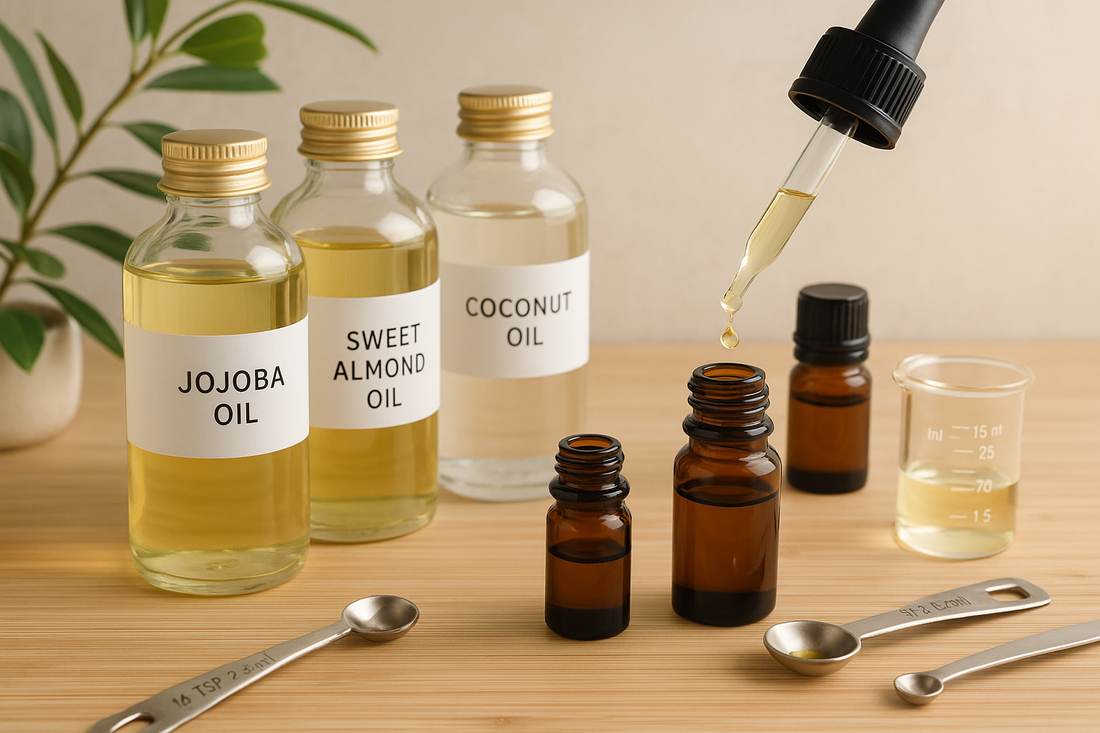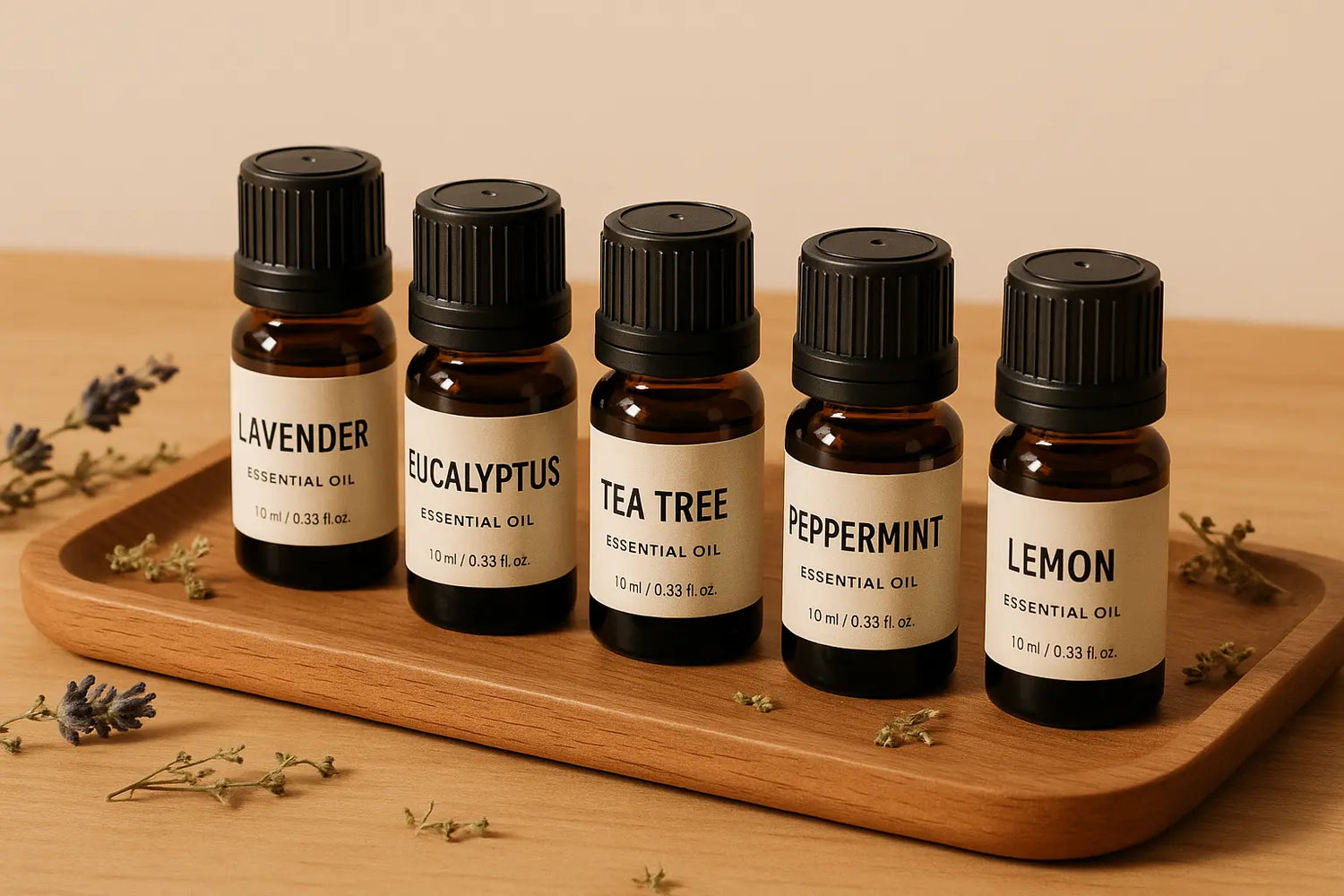
Carrier Oil Blending Guide: How to Safely Dilute Essential Oils
Share

Are you unsure how to safely use essential oils on your skin? This carrier oil blending guide will help you understand how to properly dilute essential oils with carrier oils to ensure safe application and maximize benefits without irritation. Knowing the right carrier oil and dilution ratios is essential for anyone interested in aromatherapy, skincare, or massage with essential oils. Read on to discover the fundamentals of carrier oils, blending techniques, and safety tips to confidently create your own essential oil blends.
Understanding the Basics: What Are Carrier Oils and Why Blend Them?
What Are Carrier Oils?
Carrier oils are natural, plant-based oils extracted from the fatty portions of plants such as seeds, nuts, or kernels. Unlike essential oils, they are milder and odorless or lightly scented, making them ideal to "carry" essential oils safely onto the skin. Carrier oils provide a base that dilutes the potent essential oils, reducing the risk of irritation or sensitization when applied topically.
Why Blend Essential Oils with Carrier Oils?
Essential oils are highly concentrated and can be too strong for direct skin application. Without dilution, they may cause redness, allergic reactions, or even chemical burns. By blending essential oils with carrier oils, you create a safe and effective product that spreads evenly on the skin, improves absorption, and enhances the therapeutic effects. Additionally, carrier oils contribute their own nourishing properties, such as vitamins and fatty acids, which benefit the skin.
Common Carrier Oils and Their Unique Properties
Popular Carrier Oils for Essential Oils
There are many types of carrier oils to choose from, each with unique characteristics. Some common ones include:
- Jojoba Oil: Resembles skin’s natural sebum and absorbs easily without clogging pores.
- Sweet Almond Oil: Lightweight and excellent for dry or sensitive skin.
- Coconut Oil: Moisturizing with antimicrobial properties; fractionated coconut oil is best for non-greasy blends.
- Argan Oil: Rich in antioxidants and vitamins, great for skin and hair care.
- Rosehip Oil: High in vitamin A and C, ideal for aging or damaged skin.
- Grape Seed Oil: Light and odorless, perfect for delicate blends.
Is Castor Oil a Carrier Oil?
Yes, castor oil is a carrier oil often used in essential oil blends. It’s thicker and more viscous than many other carrier oils, which makes it excellent for hair and scalp treatments or spot applications. Castor oil has nourishing and anti-inflammatory properties, though due to its heaviness, it’s usually mixed with lighter carrier oils to improve texture for general skin use.
How to Create Blends Oil: Step-by-Step Dilution Technique
Choosing the Right Dilution Ratio
Understanding dilution ratios is key for safe essential oil use. The percentage of essential oil in your blend depends on the intended use and the user’s skin sensitivity.
- 1-2% dilution: Recommended for daily skincare and children’s products (about 6-12 drops of essential oil per ounce of carrier oil).
- 3-5% dilution: Suitable for short-term use, spot treatments, or muscle relief blends.
- 10% dilution: Use with caution and only on small skin areas; typically for occasional use.
Mixing Your Essential Oil and Carrier Oil
- Start with a clean container, preferably amber glass, to protect oils from light and degradation.
- Measure your carrier oil first, using teaspoons or milliliters.
- Add the appropriate number of essential oil drops based on your desired dilution.
- Combine carefully and mix or swirl gently to blend evenly.
- Label your blend with ingredients and date to track freshness.
Safety Tips When Using Carrier Oil for Essential Oils
Patch Testing Before Use
Always perform a patch test to avoid adverse reactions. Apply a small amount of the diluted blend to the inside of your wrist or elbow and wait 24 hours to check for redness, itching, or irritation before widespread use.
Avoid Sensitive Areas and Know Your Oils
Never apply essential oils or blends near eyes, mucous membranes, or broken skin. Some essential oils are photosensitive or contraindicated during pregnancy or for children, so familiarize yourself with the safety profile of your chosen oils and consult a healthcare professional if necessary.
Choosing the Best Carrier Oil for Your Skin and Blends
Consider Your Skin Type
Each carrier oil has qualities that suit different skin types:
- Oily or acne-prone skin: Lightweight, non-comedogenic oils like grapeseed or jojoba.
- Dry or mature skin: Nourishing, rich oils like avocado or rosehip.
- Sensitive skin: Gentle oils such as apricot kernel or sweet almond.
Shelf Life and Storage
Carrier oils vary in shelf life, typically from 6 months to 1 year. Oils rich in vitamin E last longer, while those high in polyunsaturated fats spoil faster. Store carrier oils in cool, dark places in airtight containers to extend longevity.
Frequently Asked Questions About Carrier Oil Blending
Can I Blend Multiple Carrier Oils?
Yes! Mixing carrier oils creates custom blends that combine the benefits of each oil. For example, blending light oils like grapeseed with heavier oils like castor can improve texture and performance.
Is It Safe to Use Castor Oil as a Carrier Oil for Essential Oils?
Castor oil is safe as a carrier oil but is more viscous than most others. It’s best diluted with another carrier oil for even application and is excellent for targeted uses such as hair care or deep skin nourishment.
By following this detailed carrier oil blending guide, you can confidently create safe, effective, and enjoyable essential oil blends tailored to your needs. Proper dilution not only ensures safety but enhances the overall experience of essential oil use. Ready to start blending? Explore our selection of high-quality carrier oils and essential oils to craft your perfect blend today.

